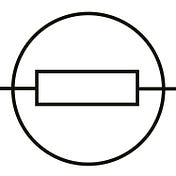I currently live in Nairobi, Kenya, but for the last fifteen years I was a photography teacher in Washington DC. For many years before that, I was a freelance photographer doing my personal body of work as well as photojournalism for clients including The Washington Post, New York Times, and international magazines. I now consider myself a 'reformed photojournalist' and focus exclusively on my own projects and arts education (aka paying it forward).
I grew up in Washington, a city that has changed a lot in my lifetime. I like to say that most of the areas where we used to be afraid to walk, now you can't afford to live. My wife is from Senegal, we have one daughter.
I grew up playing music, mostly in DC bands from age 12 onward. I gave it up for photography in my 20s, for about 15 years. I had run out of musical ideas and energy, and at least I was able to both make a living and satisfy my creative impulses with photography.
I eventually published an award-winning photo book on Belarus called The Waiting Room, exploring the culture and identity crisis of the not-quite-post-Soviet country. To my knowledge no one had done that before, a rare first in the photo business. The trick, as always, was gaining understanding over time, which could then be reflected in the pictures.
I also did a long-term project on my hometown, Fairy Tales from the Fault Lines, mostly within walking distance of the house where our daughter was born and raised. Both the Washington Post Magazine and the Nat Geo photo blog published that series. As I would tell my students, you shouldn't have to go anywhere exotic.
In 2015 I was voted Best Visual Artist in the annual Washington City Paper reader poll. Obviously it's embarrassing and stupid because of course I'm not that, who could even claim to be such a thing? But I'll take it, if someone has to.
I found my way back to music after the long hiatus. The ideas came back! I produced a solo album in 2016, a 'concept album' about the first humans to leave Earth forever for Mars.
I've exhibited a lot and given talks at places like the World Bank, National Press Club, and International Center for Journalists, American University, and the now-defunct DC Fotoweek festival. I tend to have a lot to say about not just photography, but how the arts shape us.
Growing up during Cold War, art made me believe in the future.
As a photography teacher, I would sometimes start the year by telling my students that I think most photography sucks. We don't need more photographers, but we do need photo-authors. Ideas and stories, uniquely expressed in unexpected ways.
Now I'm back to being a photographer and trying to heed my own lessons. I'm looking forward to Medium as a place to explore combining my photos and words in new ways.
